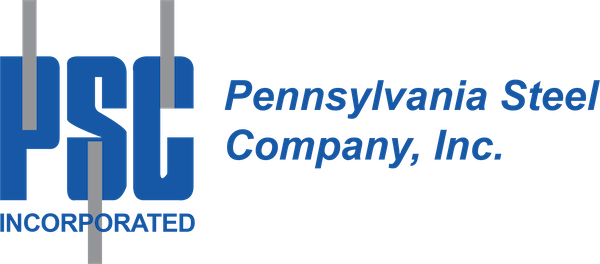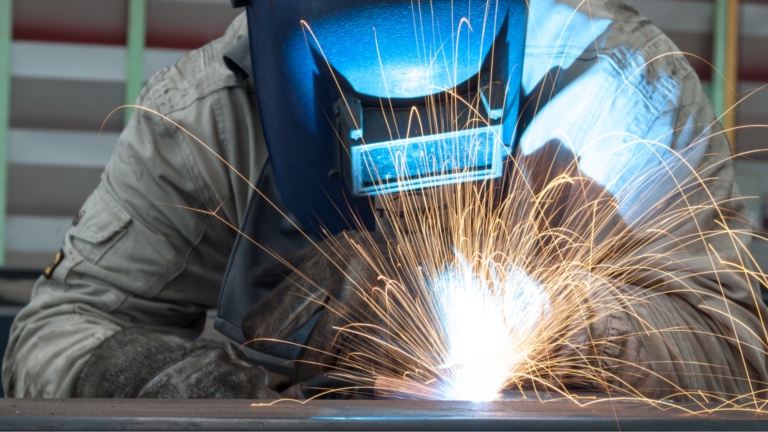When it comes to welding, one method doesn’t fit all. Certain qualities can make welding aluminum a challenge. Leading East Coast steel company and metal manufacturer Pennsylvania Steel Co. provides insight into the processing and production of construction materials. Below, we offer professional advice for ensuring a safe and effective aluminum welding process.
Aluminum Characteristics
Commercial aluminum alloys offer impressive strength-to-weight ratios and corrosion resistance. These qualities make aluminum a desirable and practical engineering material.
Aluminum is available in numerous forms and grades. They differ in purity, hardness, ductility, thermal conductivity, and various other properties. In other words, aluminum exists in a vast range of types. Here are several commonly utilized grades:
- 1100 Aluminum (the purest form of aluminum commercially available)
- 3003 Aluminum (most frequently used in the industry, pure aluminum with an addition of manganese)
- 5052 Aluminum (excellent resistance against salt water corrosion)
- 6061 Aluminum (most commonly used aluminum alloy in construction)
- 6063 Aluminum (often referred to as the “architectural alloy” for its use in building structures)
The specific grade of aluminum speaks to its chemical composition and how aluminum is made. These attributes determine the material’s ultimate application and price point.
Can You Weld Aluminum?
You can weld aluminum, but standard welding methods can be unsafe and ineffective. Aluminum is highly sensitive, susceptible to impurities, and offers a small window of workability. Since pure aluminum is soft and malleable, adding various alloys creates its diversified range of types. Although the element naturally has a low melting point, the tough exterior oxide layer complicates the welding process.
Why is Welding Aluminum Difficult?
Specific metal properties can make them challenging to weld. For example:
- Oxidation: the chemical reaction that occurs at the surface of a metal when exposed to oxygen.
- Porousness: measurement of permeability and other energy absorption properties.
- Impurities: the presence of trace amounts of other elements.
- Thickness: the metal’s “gauge,” expressed in mm (millimeters).
Physical properties vary widely in terms of aluminum grades and often present obstacles when welding. The following characteristics can make aluminum difficult to weld:
- High thermal conductivity (resulting in high dissipation of heat)
- Hydrogen solubility (causing excessive porosity)
- Oxide layer (requiring thorough cleaning/preparation)
Types of Aluminum Welding
When it comes to welding aluminum, there are a number of welding methods to choose from. The best one for each project depends on the specific use case.
GTAW/TIG Welding
Gas Tungsten Arc Welding (GTAW), commonly known as TIG welding, is a popular precision welding process for aluminum. It uses a non-consumable tungsten electrode and an inert gas to create a clean and controlled arc. It is ideal for welding thin aluminum sheets or intricate designs while producing minimal spatter.
GMAW/MIG Welding
During Gas Metal Arc Welding (GMAW), or MIG welding, a welder feeds a continuous wire electrode through a welding gun with a shielding gas to protect the weld pool from contamination. This process is efficient for high-speed production and thicker aluminum sections, providing good weld penetration and strong, dependable results.
Laser Beam and Electron Beam Welding
Laser beam and electron beam welding are advanced processes that welders can use for aluminum. These methods use concentrated energy beams to melt and fuse the aluminum surfaces with pinpoint accuracy, making them suitable for applications where precision and minimal heat-affected zones are critical.
Resistance Welding
Resistance welding is a method used for aluminum, particularly in the automotive and aerospace industries. It passes an electrical current through the aluminum parts to cause the metals to fuse. With aluminum, the welder must be cautious of the high electrical and thermal conductivity.
Shielded Metal Arc Welding (SMAW)
Due to its limitations, SMAW, or stick welding, is not the primary choice for aluminum. It involves a consumable electrode covered with a flux coating, making it better suited for welding steel. However, welders use it for aluminum in specific applications with specialized electrodes and techniques.
Friction Welding
Friction welding bonds aluminum through a solid-state process. It involves rubbing the aluminum parts together to generate heat through friction and then applying pressure to join them. When welders require high-strength, reliable bonds, they may use friction welding.
6 Tips for Welding Aluminum
Pennsylvania Steel Co. specializes in metal processing services for commercial fabricators throughout the United States. We possess decades of expertise in the metal production industry. By sharing our expert knowledge, we strive to educate our valued clientele. Above all else, Pennsylvania Steel Co. values its partners’ and customers’ safety, loyalty, and trust. Properly and safely execute your next aluminum weld by following the expert advice we’ve provided below. We also have a guide on how to weld steel if you have a different material in mind.
1) Clean and prepare your material thoroughly.
Proper preparation of your aluminum alloy is essential to effective welding. Cleaning and degreasing the metal beforehand removes the outer oxide layer. Adequate removal of this tough layer exposes the raw aluminum material, which has a much lower melting point. For reference, pure aluminum melts at 1200ºF while the oxide layer melts at 3700ºF.
2) Correctly store your aluminum materials.
Adequately storing prepped aluminum prevents re-oxidation. As stated, the oxide layer is tough to remove. You want to avoid additional preparation and scrubbing.
3) Use a heat sink.
A heat sink is a supplemental component that absorbs or dissipates unwanted heat. The appropriate heat sink ensures optimized thermal transfer during the weld.
4) Tailor your technique for different building materials.
As previously mentioned, aluminum’s complex chemical structure can complicate welding as it’s highly sensitive. Before diving in, take the time to do your research, assess your materials, and refine your technique.

5) Always wear proper PPE.
Once again, we aim to educate and protect our clientele. As a result, we urge all of our fabricators to wear the necessary Personal Protective Equipment (PPE) when processing or working with any metal. When welding aluminum, for example, we highly recommend wearing a respirator!
6) Be patient and don’t rush.
Speeding through the welding process is undoubtedly dangerous. No matter how much PPE you wear, the best protection is practiced knowledge!
Allow the Pros at Pennsylvania Steel to Simplify the Welding and Production Process
Our goal at Pennsylvania Steel Company is the success of our valued clientele. We’re advancing this sustainable industry by sharing our expertise, providing superior customer service, and supplying metal fabricators all over the eastern U.S. Beyond our Bensalem, PA facility, we have Pennsylvania, New York, Richmond, Virginia, North Carolina, and Ohio steel warehouse locations. We take pride in being a superior steel and pipe supplier and processor for manufacturing businesses throughout the U.S.
Our passion for advancing the steel trade stands over 50 years strong. Numerous industries – including the construction, defense, and technology sectors – rely on our experienced steel company as a vital source of premium metal production and processing services. We’re committed to facilitating growth – as a company, as an industry, and as a community. Request a quote or contact our metal specialists for inquiries regarding our product lines and services.




